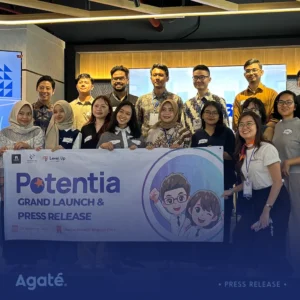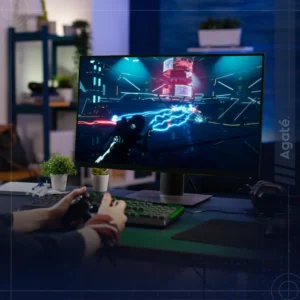
Recently, Apple unveiled the Apple Vision Pro, a revolutionary spatial computer that combines augmented reality (AR) and virtual reality (VR) in one headset. It allows users to experience an infinite canvas for apps that scale beyond traditional display with immersive and interactive 3D environments and overlay digital content onto the real world. The device is expected to launch in 2024, and it has already generated a lot of excitement and curiosity among consumers and developers alike.
But how can developers create games and apps for the Apple Vision Pro? What tools and platforms are available for them to unleash their creativity and innovation? One of the answers is Unity, the world’s leading platform for creating and operating real-time 3D content.
Unity has recently announced the beta release of its game development platform for the Apple Vision Pro, called PolySpatial. This platform is designed to help developers create existing or build applications with the Unity Engine for the Apple Vision Pro. Your applications will have access to benefits such as pass-through and Dynamic Foveated Rendering.
Apple will revolutionize personal computing, mobile devices, and wearable technology with its new device, Vision Pro with its spatial computing, and its new platform, visionOS. Announced in June 2023 at WWDC, Vision Pro runs on visionOS, a platform that extends Apple’s frameworks and tools for spatial computing. Developers can create apps and games for Vision Pro using SwiftUI, RealityKit, ARKit, and other familiar technologies.
Unity-based games and apps can gain full access to Vision OS features such as pass-through high-resolution rendering and Native gestures, and because these Unity apps are running natively on Apple Vision Pro, they can sit side–by–side rendered simultaneously with other Vision OS apps. In addition, Apple Vision Pro will have a brand new app store where users can discover and download all the apps built for visionOS as well as compatible iPad and iPhone apps.
Spatial Computing
But what is spatial computing exactly? And why is it so important for the future of technology? Spatial computing is the next frontier of technology that allows users to interact with 3D content in their environment. It’s a form of augmented reality that blends the digital and physical worlds, creating immersive and engaging experiences. With spatial computing, you can see the real world and virtual objects together in a natural way. You can use devices like the aforementioned Apple Vision Pro, Microsoft HoloLens, Meta Quest Pro, and Magic Leap to enjoy this technology. These devices show you the real world and also add virtual objects to it in a way that makes them look like they are in 3D.
One of the key features of visionOS is the Shared Space. Spaces are different modes of interaction that apps can use to show their content. By default, apps launch into the Shared Space, where they exist side by side, much like multiple apps on a Mac desktop. Apps can use windows and volumes to show content in the Shared Space. Windows are built with SwiftUI and contain traditional views and controls. Volumes are SwiftUI scenes that can showcase 3D content using RealityKit or Unity. The user can reposition these elements wherever they like in the Shared Space.
The Shared Space is not the only space available in visionOS. There are also other spaces that apps can use for different purposes. For example:
- The Full-Screen Space allows apps to take over the entire field of view of the user, creating an immersive VR experience.
- The Focus Space allows apps to show content in front of the user’s eyes, creating an AR overlay that follows their gaze.
- The World Space allows apps to show content anchored to real-world objects or locations, creating an AR experience that interacts with the environment.
- Run multiple immersive applications side by side within passthrough while in the Shared Space.
These spaces are not mutually exclusive; apps can switch between them or use them together as needed. For example, an app can use the Full Screen Space to show a VR game, then switch to the Focus Space to show a menu or a notification. Or an app can use the World Space to show a map or a guide, then switch to the Shared Space to show a window or a volume with more information. VisionOS is designed to make spatial computing accessible and intuitive for both developers and users. It provides a consistent, coherent user interface and powerful, flexible developer tools. With visionOS, Apple is paving the way for the next generation of computing, where the digital and physical worlds are seamlessly integrated.
With this exciting announcement, there is a possibility that Agate will create new games and provide game development services for the Apple Vision Pro, given that Agate is a game studio that has always been adaptable and innovative with new technologies.
Are you looking for co-development, art services, or game porting? Look no further than Agate!
Don’t hesitate to get in touch with us today and learn more about how we can help you take your project to exceptional heights.







